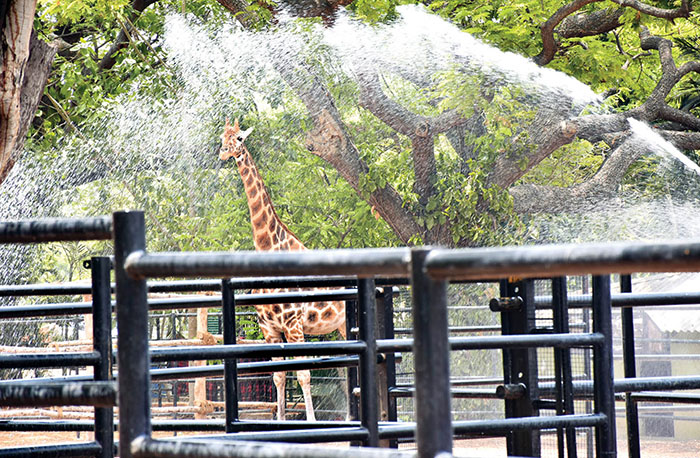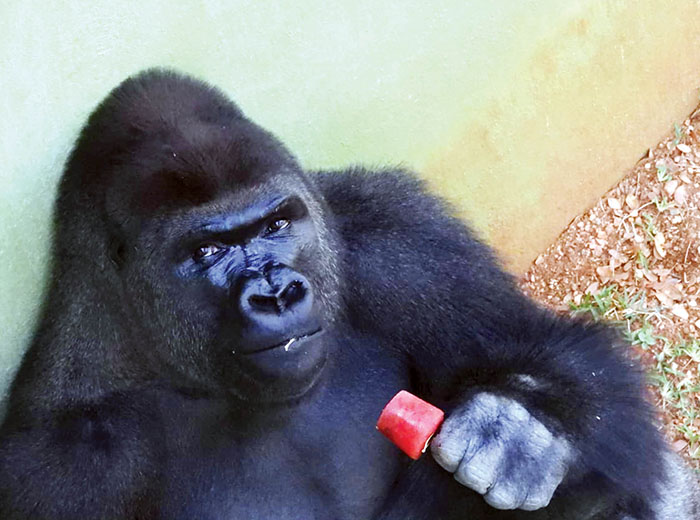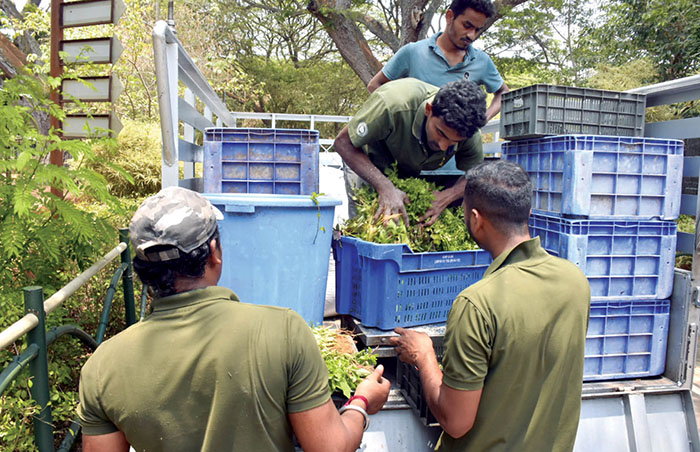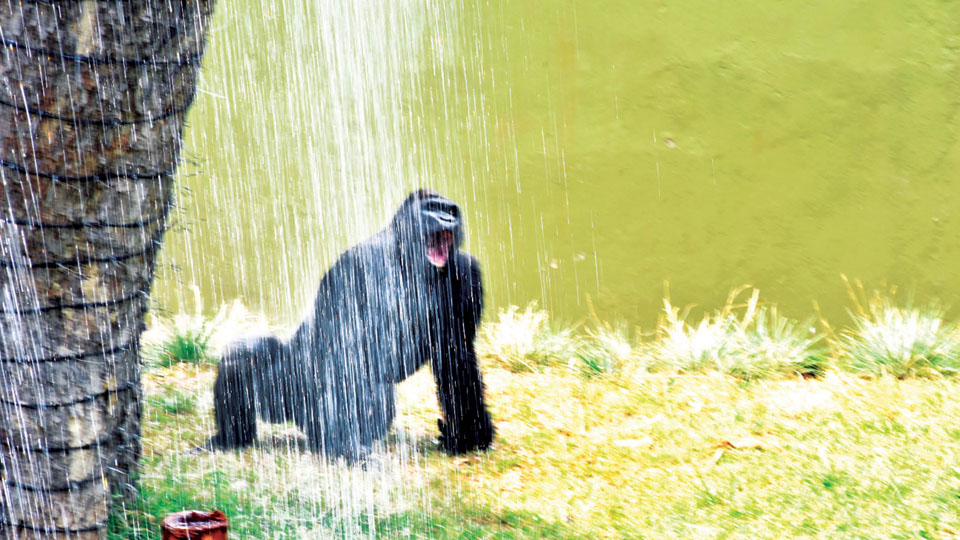Mysuru Zoo helps animals cope the summer heat with sprinklers, foggers, electrolytes, fruit diet
Mysuru’s average temperature has soared beyond 40 degrees Celsius, prompting residents to seek refuge in air-conditioned comfort to combat the heat.
As is customary every year, the authorities at Mysuru Zoo have initiated measures to ensure the well-being of its inhabitants, with animals receiving showers at least two or three times daily, along with adjustments to their diets.
More than 1,200 animals and birds at Mysuru Zoo, including primates such as orangutans, gorillas and chimpanzees are keeping cool thanks to the proactive measures implemented by Zoo management.
Individual cages and enclosures now boast of sprinkler systems, providing animals with a refreshing respite. The playful sight of animals interacting with water has become a common occurrence within the Zoo. Even the moated enclosures housing larger animals are equipped with water sprinklers and jets, ensuring their comfort during the scorching weather.

Daily water showers
Special arrangements have been made to cater to the needs of sensitive and large animals, with daily water showers for some species. Giraffe enclosures are fitted with sprinkler jets to ensure their well-being. Ice cubes are being distributed within the enclosures of tigers and bears, as well as in the ponds, to provide additional relief from the heat.
Recognising the importance of hydration, Zoo officials are diligently providing animals with electrolytes, glucose and calcium tablets to replenish body salts. Jets spray water onto animals, particularly those exposed to the elements such as elephants, giraffes, zebras, camels, lions, and chimpanzees.
The well-being of captive animals during sweltering heat is paramount, as they are prone to dehydration. D. Mahesh Kumar, the Zoo Executive Director, emphasised the shift in dietary requirements during such conditions, focusing on increased water intake and cooling foods rather than protein-rich diets. These modifications aim to ensure the health and comfort of the Zoo’s residents during the challenging heat waves.
The 132-year-old Zoo houses nearly 1,400 mammals, birds and reptiles including exotic species. The vast green cover in the 157-acre garden offers much-needed shade and the temperatures are a couple of notches down when compared to the city temperatures.

Result-oriented approach
“We are observing positive outcomes from the measures implemented to ensure the animals’ comfort, particularly focusing on water management, providing shade, and optimising their diet. These priorities are diligently adhered to and consistently monitored,” Mahesh Kumar told Star of Mysore this morning.
“We have installed foggers in bird houses, where mist is sprayed forcefully to create a cooling effect. Additionally, for herbivores such as deer and Indian gaur, we’ve constructed wallow ponds containing a blend of slush and water. These ponds enable the animals to regulate their body temperatures effectively while also keeping them free from insects,” he added.
The Zoo has taken steps to increase the water and moisture content in the animals’ diets, incorporating foods such as tender coconut, watermelon and cucumber. To address the loss of electrolytes and salt caused by excessive heat, they provide ORS to maintain a proper balance.

Fibre-rich diet
Tender coconuts and cucumbers are regularly fed to primates like chimpanzees, orangutans, gorillas and monkeys. For ring-tailed lemurs, feeding is facilitated through bottles. While gorillas and chimpanzees can open tender coconuts themselves, lemurs require bottle feeding. Electrolyte is added to the water troughs of the animals.
“Our management strategy involves adjusting the animals’ diet to reduce protein and carbohydrate intake while increasing the consumption of high-fibre and high-water content foods. With a focus on energy conservation and preventing dehydration, we prioritise avoiding sugary foods and favouring fibre-rich options,” Executive Director Mahesh Kumar explained.

During the evening hours, when animals are housed in their cages, measures have been taken to keep them cool. Limestone has been applied to the cage walls to reflect heat and terrace gardens have been constructed atop cages housing gorillas and orangutans to provide additional cooling, he added.








Recent Comments